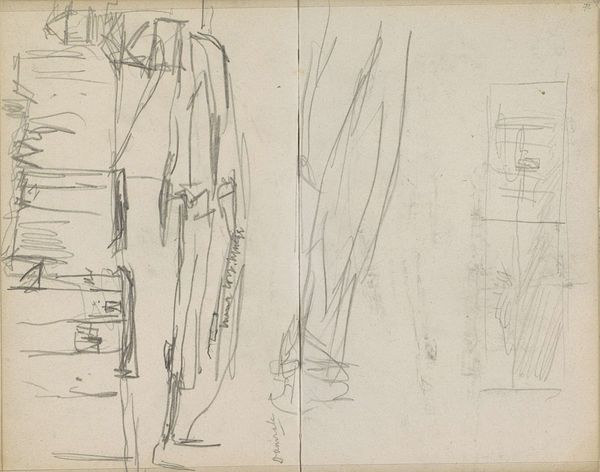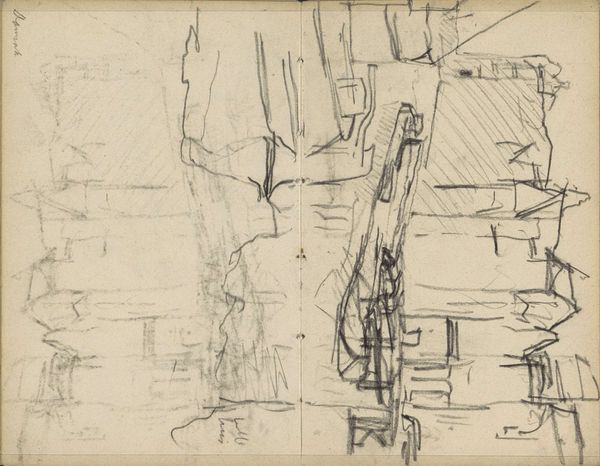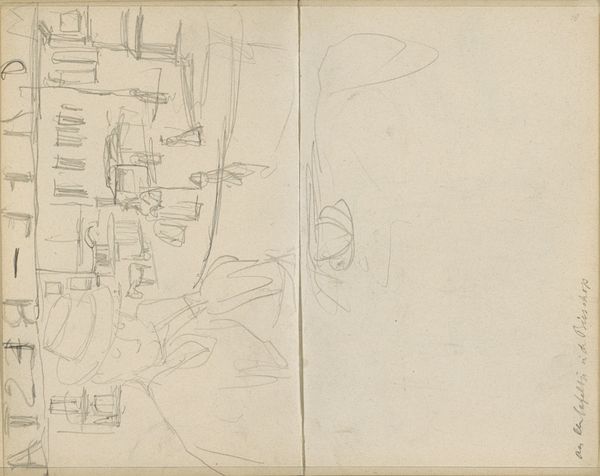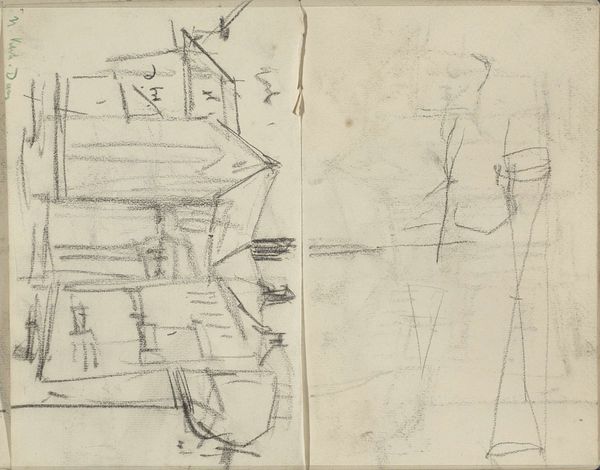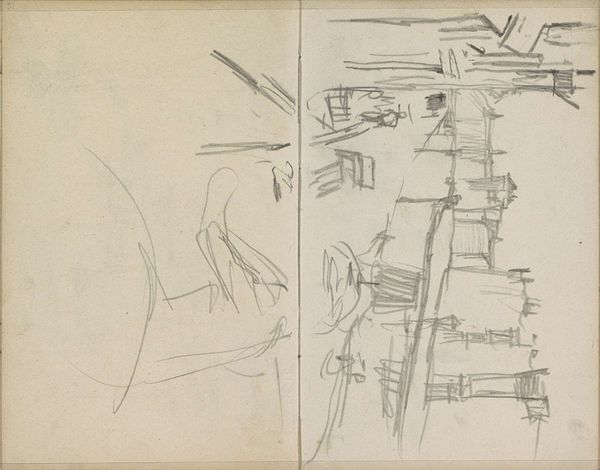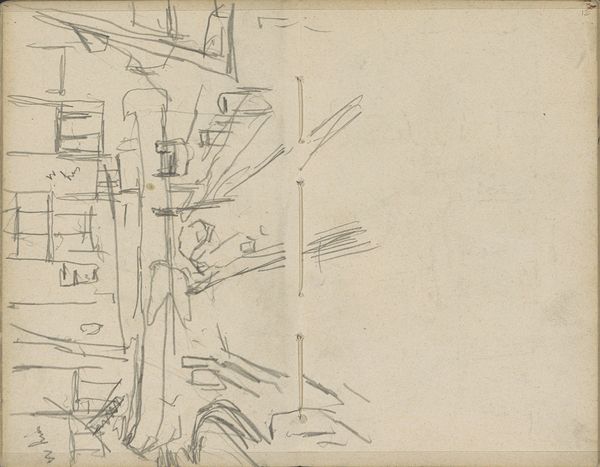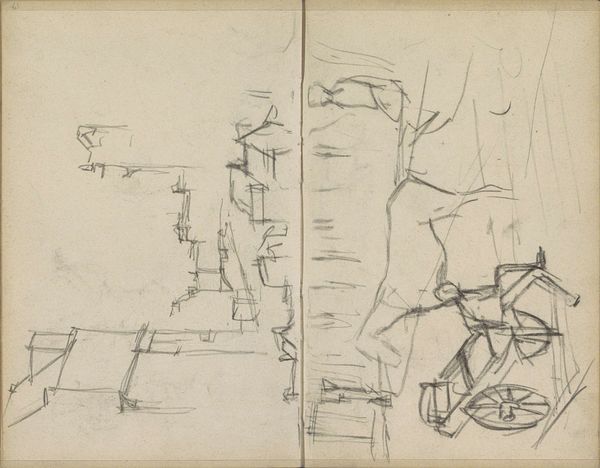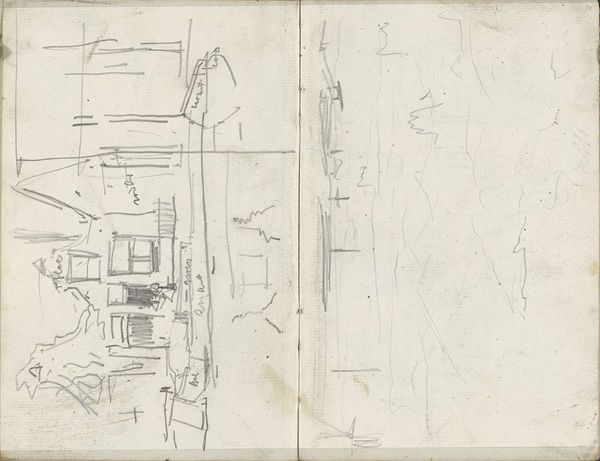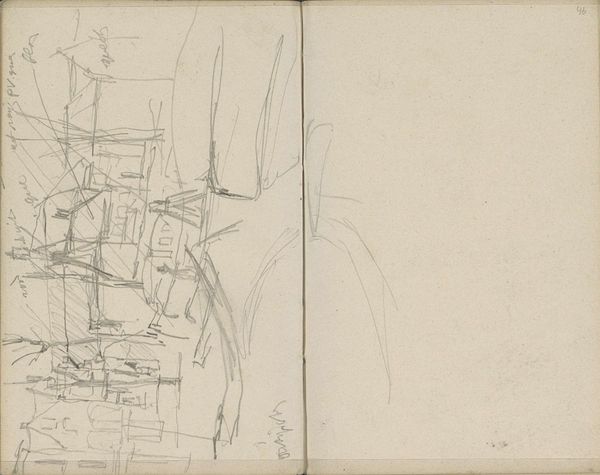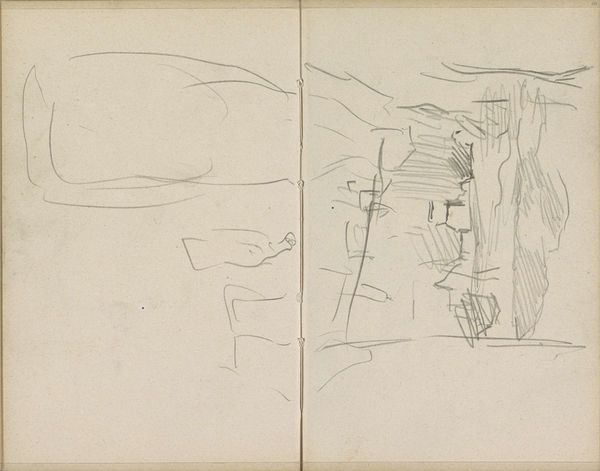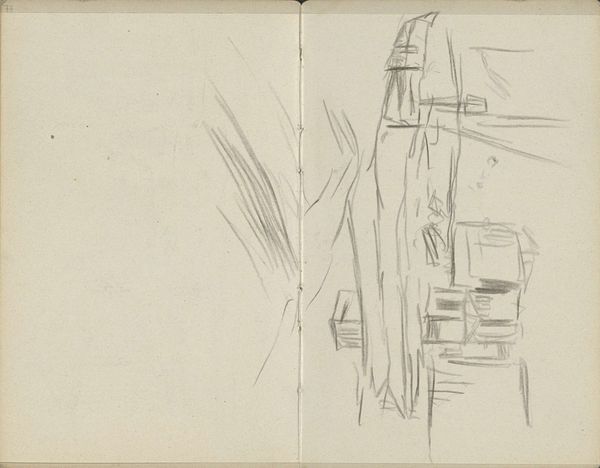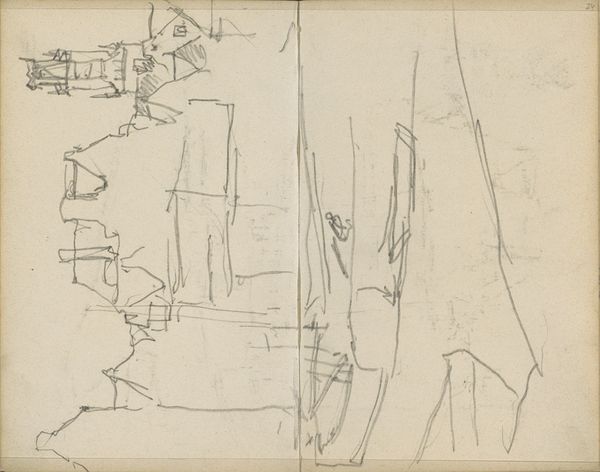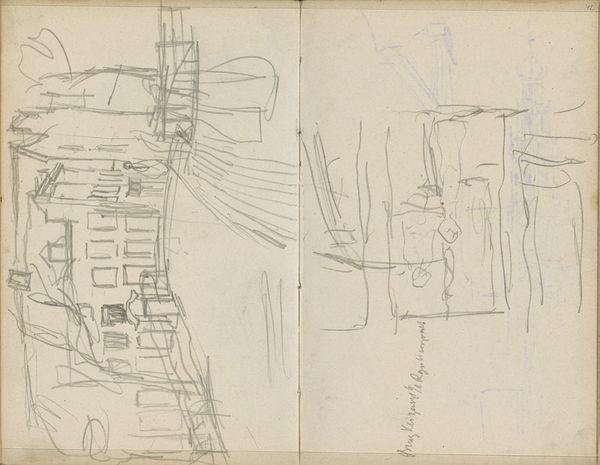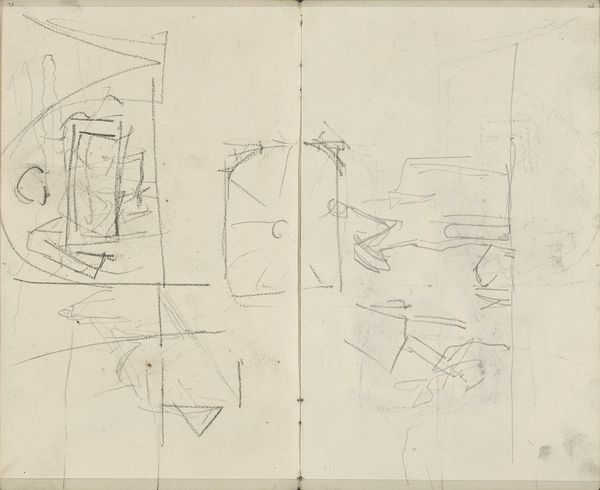
Gezicht op de Veergrep bij de Kortrijksepoortstraat te Gent Possibly 1907 - 1911
0:00
0:00
Copyright: Rijks Museum: Open Domain
Curator: Before us is George Hendrik Breitner’s pencil drawing, possibly from around 1907 to 1911, titled "Gezicht op de Veergrep bij de Kortrijksepoortstraat te Gent," housed here at the Rijksmuseum. Editor: Immediately, what strikes me is the incomplete nature of the sketch. It feels like a fleeting impression, quickly captured. The light pencil work emphasizes form over detail. Curator: Absolutely. It’s a wonderful example of Breitner’s process. Considering his well-documented work ethic, and that many of Breitner's street scenes, even the paintings, were made from photographic reference first, we can consider that his street scenes had, at least, three modes: drawing, photographic and painted representations of city life, depicting how modernity touched society's fabric. Editor: The cityscape is rendered with such minimal lines. Look how he suggests depth and volume using just a few strokes of his pencil. Curator: And the medium itself, pencil on paper, is significant. Pencil sketches are immediate, economical; they represent accessibility. Breitner's focus was not solely on aesthetics; he documented the world around him and drawing became an act that was much quicker than working with oil and photography. The material choice speaks volumes about the artist’s priorities. It has something of reportage. Editor: The stark contrast between the defined architectural shapes and the barely suggested natural forms on the right side adds tension. I perceive something interesting from the artist's use of form here. What do you see? Curator: Well, I interpret this "lack of form" to represent something of daily routine... The buildings are built, permanent, and thus fully realised. On the right are what seem to be vague sketches of trees, forms of the day, always evolving with their immediate social environment. These act almost in conversation with the street he documents. Editor: So true; seeing the built elements juxtaposed to organic "background" details gives us more context. Even incomplete, these forms echo throughout, giving the viewer visual breadcrumbs. Curator: Exactly! It reminds us that art isn't solely about finished products but about the labor, the material, and the context in which art production occurs. It allows us to look into how things emerge, like city itself! Editor: It has definitely given me insight on how looking at a piece by its artistic merits will take you somewhere far different from diving in to study its social elements. Curator: And seeing both side by side lets you study their social relationships also. Thank you!
Comments
No comments
Be the first to comment and join the conversation on the ultimate creative platform.
